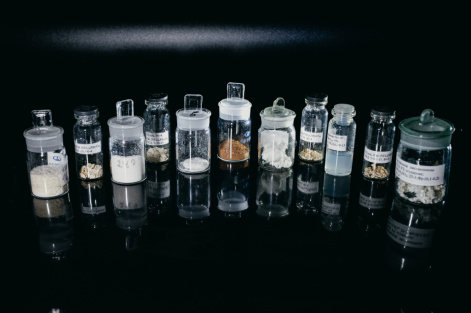"Green" technology for processing wood waste will allow environmentally friendly production of nanocellulose, vanillin and other valuable chemical products
27 October 2021 г.

In wood processing, a huge amount of waste is generated: chips, sawdust and other wood residues unsuitable for further use. Existing industrial processes for processing wood waste to obtain monosaccharides, ethanol, furfural are performed at high temperatures and pressure using environmentally hazardous corrosive reagents, with lignin remaining as unused waste.
A team of scientists from the Federal Research Center "Krasnoyarsk Science Center of SB RAS" together with a researcher from France developed environmentally friendly catalytic methods for processing larch wood to obtain microcrystalline, microfibrillated and nanocrystalline celluloses, vanillin, levulinic acid and monosugar. In this case, non-toxic reagents are used such as water, hydrogen peroxide, oxygen and acetic acid. The developed processes make it possible to expand the range of products obtained from larch wood, reduce the number of technological stages, and increase the environmental safety of wood processing in comparison with the traditional technologies.
The methods are based on two main processes. During the peroxidation of larch wood in a water-acetic acid medium in the presence of molybdenum salt as a catalyst, microcrystalline, microfibrillated and nanocrystalline cellulose, monosugar and a mixture of aliphatic and aromatic acids are obtained. When wood is oxidized with oxygen in an aqueous alkaline medium in the presence of a copper hydroxide catalyst, vanillin and cellulose are obtained, which is then converted into levulinic acid by acid catalytic hydrolysis.
“Using the developed processes of catalytic oxidation of wood, it is possible to implement the complex processing of all the main components of woody biomass into valuable chemical products. At the same time, the cost of obtaining target products of vanillin and nanocelluloses can be reduced if biologically active substances with high added value are isolated from larch wood, namely, dihydroquercetin and arabinogalactan, ” says Boris Kuznetsov, Doctor of Chemical Sciences, Professor, Head of the Laboratory of Chemistry of Natural Organic Raw Materials at the Institute of Chemistry and Chemical Technology SB RAS.
The scientist also notes that the application of new alternative methods of deep wood processing will allow making products, taking into account the current needs of the market. Microcrystalline, microfibrillated and nanocrystalline cellulose, vanillin, dihydroquercetin, arabinogalactan, monosugar and organic acids, which are obtained by the new methods from larch wood, are in demand in medicine, chemical, pharmaceutical, food, cosmetic and perfume industries, as well as in the production of sorbents and composite materials.
The research was supported by the Russian Science Foundation (No. 16-13-10326).
Share:
